Symbols of the University | The Cornell Public Library | Cornell’s Twelve Presidents | | Andrew Dickson White, President, 1866-1885 | | Charles Kendall Adams, President, 1885-1892 | | Jacob Gould Schurman, President, 1892-1920 | | Livingston Farrand, President, 1921-1937 | | Edmund Ezra Day, President, 1937-1949 | | Deane Waldo Malott, President, 1951-1963 | | James Alfred Perkins, President, 1963-1969 | | Dale Raymond Corson, President, 1969-1977 | | Frank Howard Trevor Rhodes, President, 1977-1995 | | Hunter Ripley Rawlings III, President, 1995-2003 | | Jeffrey Sean Lehman, 2003-2005 | | David J. Skorton, 2006 | Inaugurating the Presidents |
| Cornell’s Twelve Presidents James Alfred Perkins, President, 1963-1969 In 1963, James Perkins became the seventh president of Cornell University, serving until 1969. Academic innovations were a hallmark of Perkinsís administration. By the late 1960s he was regarded as one of the leading theoreticians of higher education. Based on the recommendations of a group of distinguished biologists from around the country, a Division of Biological Sciences was created. An administrative innovation, it integrated courses in the College of Arts and Sciences and in the College of Agriculture. Similarly, the new Department of Computer Science combined courses in the Arts College and the College of Engineering. Perkins was instrumental in obtaining major foundation grants for biology, computer science, and international studies. During his tenure, salaries for faculty and staff improved rapidly, and twenty-three endowed chairs were created. Building continued with the construction of the Chemistry Research Building, Clark Hall, Bradfield and Emerson Halls, and the new Campus Store.
Perkins was committed to excellence in undergraduate education. He returned to the precedents of White and Cornell in the development of the Freshman Seminar program, the Society for the Humanities, and the Andrew D. White professorships-at-large. He was especially committed to encouraging diversity in the student body. COSEP (Committee on Special Educational Projects) was established in 1964 with a Rockefeller Foundation grant to provide educational opportunities for a significant number of minority students. The last year of Perkinsís administration was largely involved in confronting the rising level of student political protest and activism.
James A. Perkins was born in 1911 in Philadelphia. He graduated with high honors in 1934 from Swarthmore College and received a doctorate in political science from Princeton University in 1937. He remained at Princeton until 1941, first as an instructor of political science, and later as an assistant professor and assistant director of the School of Public and International Affairs. During World War ii, Perkins served in the Office of Price Administration and the Foreign Economic Administration. From 1945 to 1950 he was Vice President of Swarthmore College.
In 1950 Perkins joined the Carnegie Corporation as an executive associate, and in 1951 became Vice President. From 1951 to 1953, he served as Vice President of the Carnegie Corporation of New York and the Carnegie Foundation for the Advancement of Teaching. In 1963 he became the seventh president of Cornell University, serving until 1969.
He died in 1998. << Prev | Next >> | 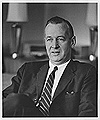 + +
James Alfred Perkins, ca. 1964
James Alfred Perkins, ca. 1964 
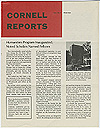 + +
The Society for the Humanities
The Society for the Humanities (now in the A. D. White House) was established in 1966 to support research and encourage imaginative teaching in the humanities 
 + +
Biological Sciences Program
Following a review by a group of distinguished biologists from around the country, a Division of Biological Sciences was created at Cornell. 
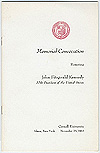 + +
Kennedy Memorial Convocation, November 23, 1963.
Following the assassination of President Kennedy in 1963, members of the Cornell community took part in a memorial convocation. 
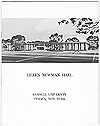 + +
Helen Newman Hall
Helen Newman Hall, the first physical education building for women, was dedicated on June 14, 1963.

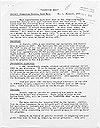 + +
Cornell's Computing Center
By 1964, Cornell was offering courses and what was then considered sophisticated equipment for students of computer science. 
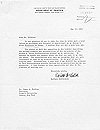 + +
The Andrew Dickson White Professors-at-Large
Letter from Barbara McClintock í23, Andrew Dickson White Professor-at-Large, May 17, 1965. 
 + +
Helen Newman Hall
Helen Newman Hall, the first physical education building for women, was dedicated on June 14, 1963. 
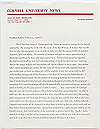 + +
The Willard Straight Takeover
The takeover of Willard Straight Hall in April, 1969, was a traumatic and mobilizing event on the Cornell campus. As a result of his ineffective handling of the situation, Perkins was forced to resign his presidency. 
|
